Home page
» ART
» Our specimens of art in the museums of the world
Our specimens of art in the museums of the worldThe art of Azerbaijan is ancient and rich in history. The art specimens made of Azerbaijani masters even since ancient times spread all over the world and had gained repute with its artistic excellence. Today, art specimens of masters of Tabriz, Nakhichevan, Ganja, Kazakh, Guba, Baku, Sheki, Shamakhy and Garabakh can be seen rich museum collections of Victoria and Albert in London, the Louvre in Paris, the Metropolitan in Washington, museums of Vienna, Rome, Berlin, Istanbul, Tehran, Cairo. Majority of rare art works from museums and private collections of European, Asian, American continents either were purchased from individuals or at different times the foreign travelers, merchants, diplomats and academics had taken it from Azerbaijan, or have been acquired by looting. 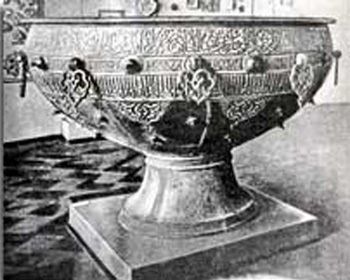 In Russian capital Moscow the majority of works of art of Azerbaijani people created for centuries, are protected. They are mainly collected in Arm Palace of the Kremlin, in the Museum of the peoples of the East, in the State Historical Museum, in Folk Art Museum, in the churches located in and around Moscow (Savvo-Storojevski, Sergiyevo churches, Belozyerski monastery, Kirill Belyozarski etc). A large part of the art of Azerbaijan in the Kremlin\'s Arm chamber is jewellery and art metal wares. Among them head covers, decorated with fine ornaments, precious stones, shields, swords, daggers should be noted particularly. 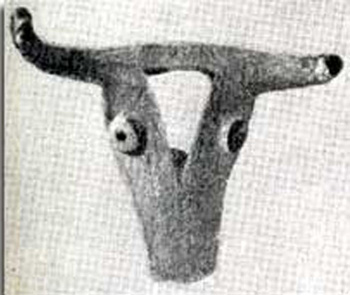 In the State Hermitage of St. Petersburg, Russia, there are specimens of art works made of jewellery, pottery, stone, carved on wood by Azerbaijani masters from ancient times to the XX century and different types of knitting patterns. One of the most valuable among items exhibited in the Hermitage in bronze figure of a bull\'s found in Karabakh and attributed to II millennium of BC.  The majority of the specimens of art of weaving kept in the Hermitage are napless carpets. Here, carpets woven in famous Azerbaijani carpet making centers from XVI to XIX century are exhibited. The Khamsa of 1430 of Azerbaijani poet Nizami Ganjavi are protected in the State Hermitage Museum. This unique exhibit is considered not just as the first from of the five poems, but also as a valuable work of art. In the museums in the United States The work of the handicraft masters of Azerbaijan especially are met in the United States. Currently, hundreds of rare art specimens in the museums of the USA’s Washington, New York, Chicago, Los Angeles, Philadelphia, Houston, San Francisco, Cleveland, Detroit, Boston and other cities, in art galleries and private collections. 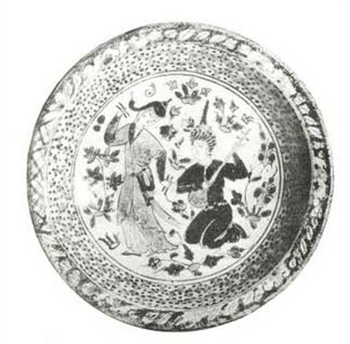 In the U.S. there are more art specimens from the Middle Ages, made by the metal. They are bronze vessel made in Nakhichevan and related to XII-XIII century and kept in a private collection in New York at Piyerpont Morgan, bronze vessel kept in private collection of Mr Hararri dated 703 AD (1304) and the with inscription of words Oljait Khudabende, bronze utensils kept in Cleveland Art museum and other specimens of XII century. The art of Azerbaijani carpet weaving is represented in the United States with the highest art. Azerbaijan carpets are the oldest in the United States is New York\'s Metropolitan Museum. 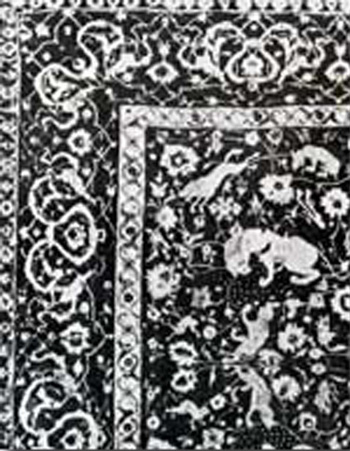 The ancient Azerbaijani carpets are exhibited in New York’s Metropoliten museum. At present, thousands of the piled and piless carpets woven in major art centers of country are ornamental and high quality carpets. In the British Museums 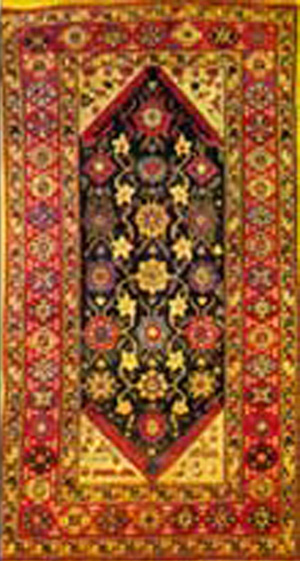 At present, hundreds of works of art of Azerbaijan are available in the United Kingdom’s London, Birmingham, Glasgow, Liverpool, Manchester city museums, private collections, and antique goods shop. The most original works of art from artistic point of view are collected in museums of Victoria and Albert in London. These works are exhibited in the museum’s Middle East section. They are pieces of art, embroidery, carpets, jewellery, pottery and other works of art. The most ancient among the works of art collected in the Victoria and Albert Museum is bronze bowl dated 1319. Among the folk art specimens the most prominent place belongs to Azerbaijani carpets. They can be divided into two groups according to the characteristics of art and technology: the XVI century Tabriz carpets are in the first group, and the second group consists of carpets woven in Guba-Shirvan, Ganja-Kazakh and Grabakh in XVI-XIX century. In London\'s Museum of carpets, carpets woven in Garabakh in 1892 are exhibited. Among Tabriz carpets exhibited in Victoria and Albert Museums the carpet woven in 1539 in Tabriz by order of Shah Tahmasib for Ardabil Mosque and known on the world of science as the Sheikh Safi needs to be emphasized particularly. In museums of France At present, the art of textile products make a large part of Azerbaijani art kept in France. In many museums and private collections of the country hundreds of high-quality fabrics woven in Shamakhy, Sheki, Ganja, Nakhchivan and Tabriz cities of Azerbaijan are kept. Plot pictures of XVI-XVII centuries occupy a special place among them. At present, the most valuable carpets of Azerbaijan are in “Decorative arts” and the Louvre Museum in Paris. 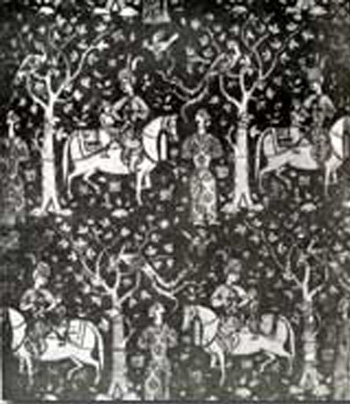 In Louvre museum some specimens of metal art considered as unique and made of silver, copper and bronze. Among them is bronze ware dated 1190 with original figure attracts attention more. This art work is exhibited nowadays in the Louvre art museum, on the first floor of the hall of Eastern art. In one of the scripts on bowl the name of its master - Salman Osman Nakhchevani was noted. In museums of Hungary Specimens of works of art of Azerbaijan in Hungary till the 40-es of XX century were kept in private collections. During the last 50-60 years, these unique works of art gradually were taken under the state patronage and concentrated in museums. At present majority of art specimens of Azerbaijan are persevered in the Decorative arts and Eastern culture museums of Budapest city. Today, more than 200 specimens of folk art are preserved in these museums. Among them are specimens of art of the carpet, fabric, embroidery, made of metal and wood. Majority of art specimens exhibited in museums of Budapest are carpets. 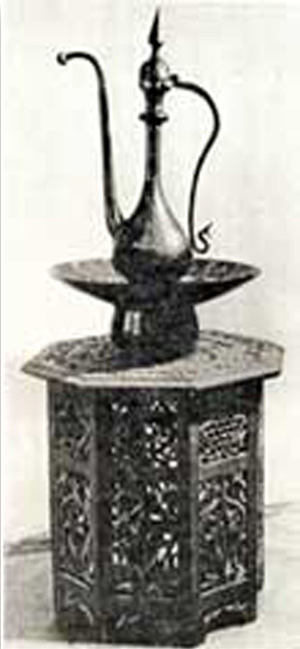 The carpets are kept here carpets woven at different times in well known art centers like Baku, Guba, Shusha, Kazakh and Tabriz. One of precious pearls of the museums of Budapest is embroidery woven at different times. The embroidery kept here consists of cover, pillowcase, table, curtains and horse cover. One of these kinds of art is the curtain, decorated by masters of Tabriz in the XVI century, which causes the special interest. Works of art made of metal, wood and ceramic and exhibited in the museums of Budapest attract attention, too. The majority of art works from metal are weapons (swords, daggers) and some household items (tray, sold, lamp). These art specimens of XVIII - XIX centuries remind hand works of Shirvan masters for its art and technological characteristics. The only wood-carving specimen exhibited in Budapest’s «Decorative arts» is of this kind. In museums of Switzerland Examples of the art of Azerbaijan are kept mostly in museums of Switzerland’s cities Bern, Geneva, Zurich, Basel, and Lausanne. The center of exposition of historical museum of Bern is mafras woven in XVIII century with motifs of ornaments and stylized in unity of blue and red colors and the kilim (rug) under it. One of the interesting carpets kept in historical museum of Bern is “Gollu chichi” carpet woven in Guba in 1830. 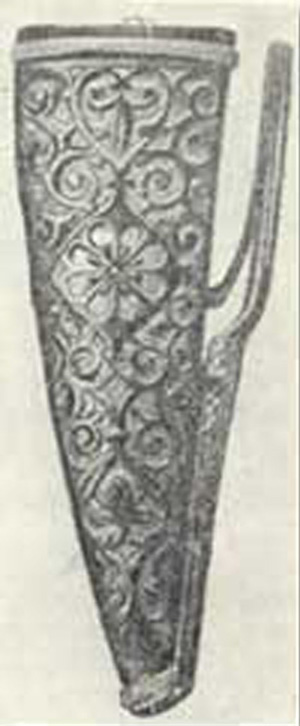 In addition, dagger, sword, guns and gunpowder containers made in the XVIII-XIX centuries in Shamakhy, Goychay, Ganja, Sheki, Baku, Tabriz, and Ardabil especially attract the attention. In number works of art of Shirvan masters dominate in historical museum of Bern. There are copper home utensils widely used by Azerbaijanis in XVIII – XIX century in Eastern section of the historical museum of Bern. In museums of Germany 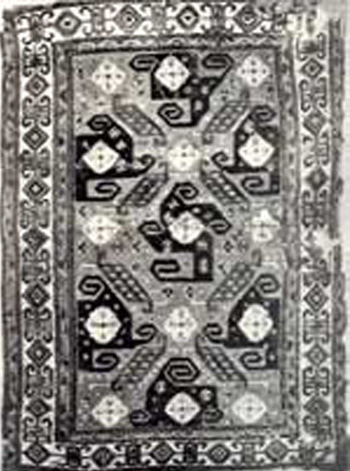 Carpet specimens of Azerbaijan are kept in museums of Bonn, Hamburg, Munich, Cologne, Dusseldorf, Frankfurt-Main, Manheim and other cities of Germany. In terms of originality Kazakh carpet of the XVIII century demonstrated in antiques goods store of the city of Munich in 1960 is worth of the attention. In museums of Turkey 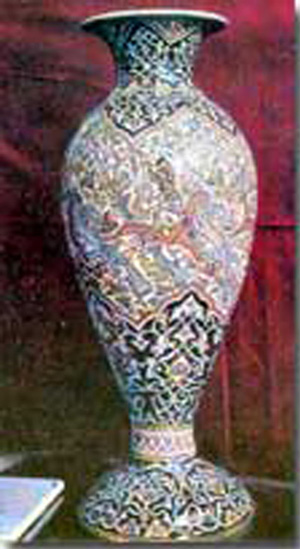 Among cities of Turkey the specimens of the decorative and fine arts of Azerbaijan mostly are concentrated in Topkapi Palace Museum, the National Museum of Turkish and Islamic Arts in Istanbul. Among specimens kept in Istanbul museums the most prominent examples in numbers are of household items, jewellery and weapons made of different metals (gold, silver, steel, copper etc.). The steel hood kept in Topkapi dated 1528 is considered to be one of the valuable monuments creating imagination on Azerbaijani jewellery of the medieval ages. 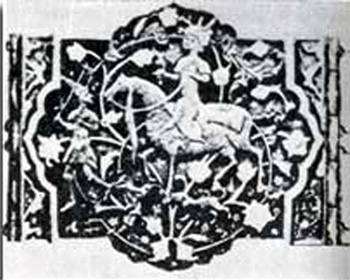 Among Istanbul metal art specimens kept in museums of Istanbul the bronze items fixed on the top of mosques, religious schools and minarets once upon a time built in Tabriz and Ardebil occupies special place. Very rare specimens of art of weaving are kept in museums of Turkey. From them fabrics manufactured in Shamakhy, Ganja, Sheki, Shusha and Tabriz, carpets, artistic embroidery are worthy of more attention. The oldest Azerbaijani carpet kept in Turkey is of the XIII century.
|
